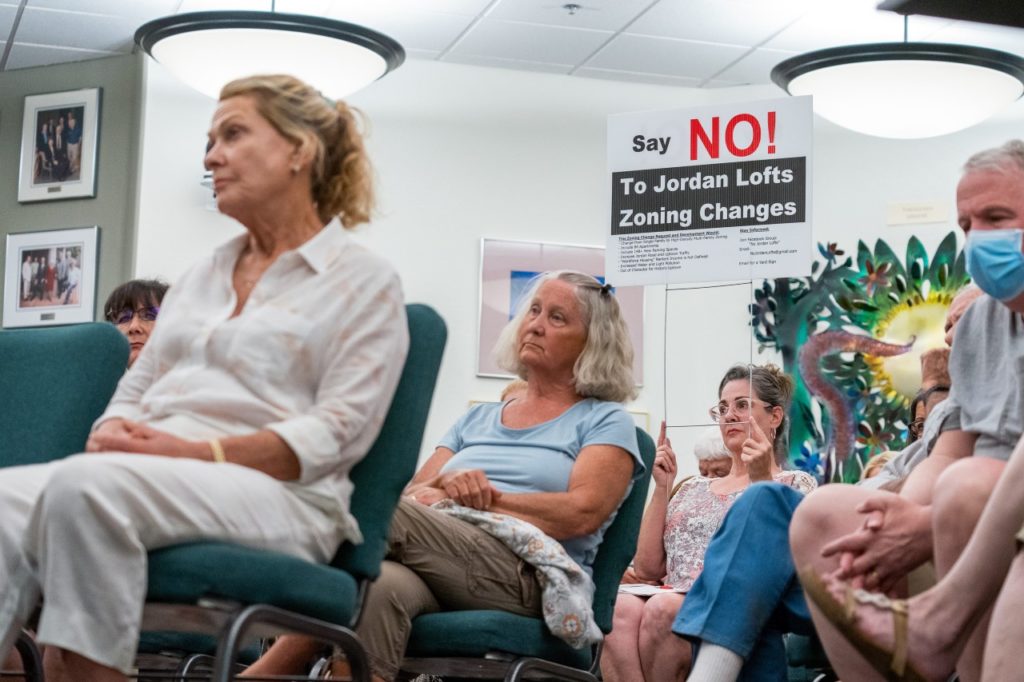The numbers speak for themselves.
Between the lack of available housing, the increasing number of short-term vacation rentals and often outlandish rental prices, it’s become the perfect storm for many of those looking to work and reside in Sedona and having little luck in doing so.
This has left many — including city of Sedona officials — seeking ways to help address this housing need, which some have said has hit crisis mode. But a proposed project that developer Miramonte Homes is hoping will make a dent in that problem is receiving push back from residents living adjacent to the project.
The Sedona Planning and Zoning Commission held a work session Tuesday, June 1, to discuss Jordan Lofts, a proposed 84-unit townhome-style apartment project on Jordan Road in Uptown.
The plan is to designate 10 of the units as “affordable,” under city guidelines.
The meeting was for discussion only and no action was taken. It was the first step of the Major Plan Amendment process to Sedona Community Plan as well as a conceptual zone change, and conceptual development review.
The item will come back before the commission on Tuesday, July 6, during a public hearing.
Major Plan Amendments are considered just once a year by law and this is the first time in four years that one has come before the commission.
The proposed development sits on 6.5 acres at 630 Jordan Road and 500 Quail Tail Trail and is owned by Garry Shuster.
The land, which is currently vacant, is broken into two parcels with just over two acres facing Jordan Road and is zoned multi-family. The remaining 4.4 acres in question is zoned single-family and in order for the project to proceed, it must be rezoned to multi-family. The sale of the land to Miramonte Homes is contingent upon the project receiving the zone change.
In its letter of intent to the city, Miramonte representatives wrote in part, “Initially, Miramonte proposed to rezone both parcels to RM-3 [Multi- Family Residential High Density], which would allow density up to 20 dwelling units per acre, or up to 130 units across the project site.
However, Miramonte seeks to construct 84 units and no more. In response to feedback gained in the neighborhood meeting process, Miramonte has scaled back its density request to RM-2. An RM-2 designation, together with density allowances for affordability, will permit an 84-unit community while also assuring the surrounding neighborhood that additional units will not be added in the future.”
Attorney Whitney Cunningham spoke to the commission on behalf of Miramonte Homes. He said that as of last year, Sedona had just 250 apartment units, or 4%, of the total housing in the city. That’s compared to 22% of housing throughout Arizona being apartments. He added that 85% of Sedona’s workforce lives outside the city limits, with the main reason being the lack of available or affordable housing.
“The fact is, an apartment is among the most affordable ways for someone who works in Sedona to have a place to live,” Cunningham said. “It’s less expensive than a single-family residence and less expensive than ownership. Fundamentally, it’s what we consider to be workforce housing.”
He went on to add, “When these folks find better paying jobs closer to where they live, it’s going to become that much harder for Sedona businesses to be able to staff up. Some of the comments you have received talk about Sedona businesses only partially reopening or not reopening because they are not able to find folks who can afford to make it here and work.”
Piñon Lofts, located on State Route 89A in West Sedona, is one of the largest apartment complexes in town with 45 units. Nearly 60% of its tenants work in Sedona.
Charity Lee, the project manager for Miramonte, said that of the 84 units, the current proposal calls for 60 two-bedroom apartments with 12 one-bedroom and
12 three-bedroom units. It has yet to be determined how many of the affordable units will be one or two bedroom. They also said that short-term vacation rentals will not be allowed.

Around a dozen people expressed concerns about Jordan Lofts to the commission and others by email to the city. Some of those concerns included an increase in traffic, density on the project, potential decrease in surrounding property values, obstruction of viewshed, and whether they would truly be affordable or draw residents in the workforce.
Several acknowledged the need for this type of housing but didn’t feel Uptown next to their homes was the right location.